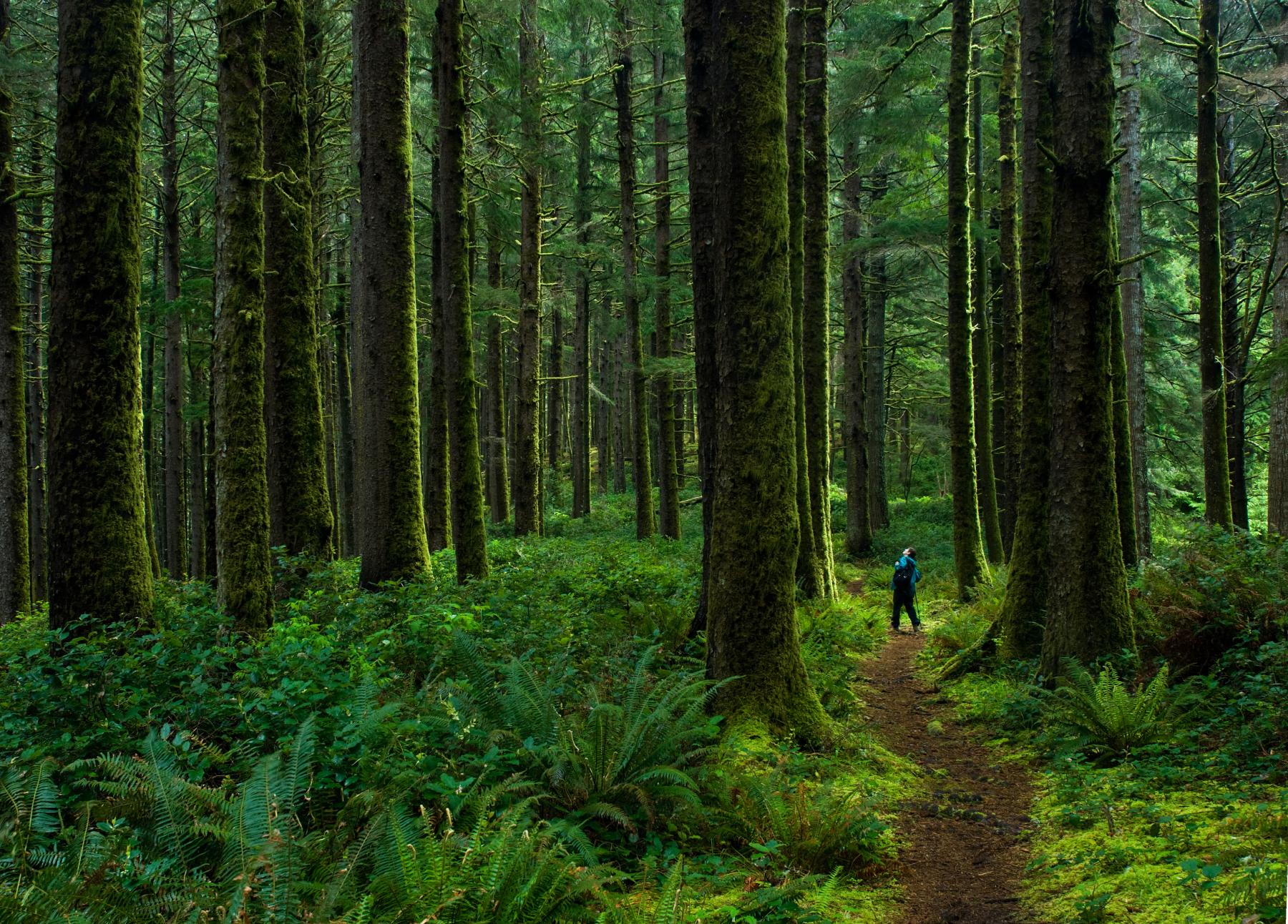Environment & People
Understanding how and why people interact with nature helps us improve how we manage these vital resources. At the Forest Service, our scientists study these interactions using a wide range of methods including social science, economics, geography, and traditional knowledge.
Forests form a cornerstone of the American economy, providing raw material and jobs in mining, grazing, and timber, as well as work in recreation, and restoration. Non-timber forest products like wildlife, mushrooms, berries, and greenery are harvested for commercial and subsistence-based livelihoods as well as home use.
Forests are destinations to walk, hike, play, picnic, climb, and more, contributing physical and mental health benefits. People have special connections to places in nature, bringing them peace and a sense of identity. All this takes place in many kinds of settings – from a big, remote, and wild National Forest to a small treed urban park that provides respite and benefits to city dwellers. Forests, woodlands, and trees are also essential to solving the climate change crisis.
As the first stewards of what are now public lands, tribes bring millennia of traditional knowledge to land management, and have special relationships with the land and its resources that maintain their lifeways.
Forest Service researchers throughout the United States partner with colleagues from universities and non-profit organizations to conduct surveys, interviews, and focus groups to hear from people like you about your views on forests, trees, and the environment. Our findings inform natural resources management strategies to improve the connections between people and the environment.
Featured Work
- A multidisciplinary team created a tool for assessing the tree canopy in urban areas. Using this tool, residents and local governments have planned tree plantings to effectively reduce heat islands, manage storm water, provide opportunities for physical and mental health, and address environmental justice.
- Scientists are part of research partnerships with Native American Communities, working on projects that focus on sustainability of botanical species that are important to indigenous communities.
- Across the country, people are drawn to the healthful and rewarding experience of being in nature. Recent science highlights A National Vision for Recreation Research, outlining a set of research opportunities that could help connect more people to special places and life-enhancing experiences.
- The i-Tree Software Suite is a set of urban forestry analysis and benefit assessment tools. i-Tree applications enable users to examine urban forest resources at all scales, from entire states and municipalities to neighborhoods, lots, and individual trees.
- The Forest Service is connecting veterans with the lands for which they fought, through research exploring outdoor programs for veterans on public lands and gauging support among other federal land managers for using the inherent therapeutic value of nature to benefit veterans.



